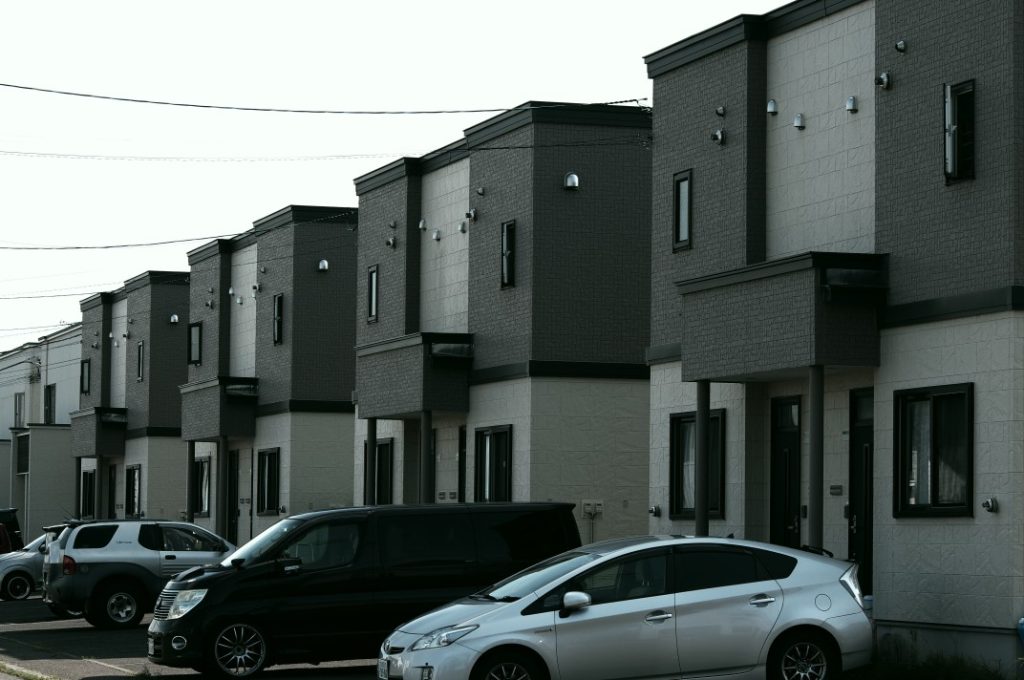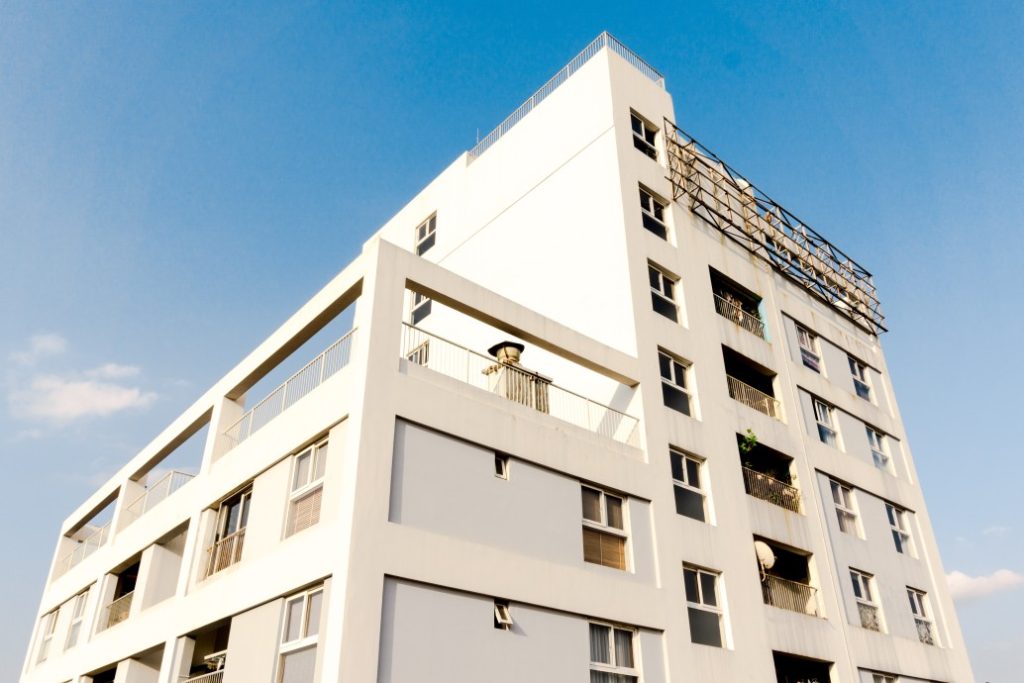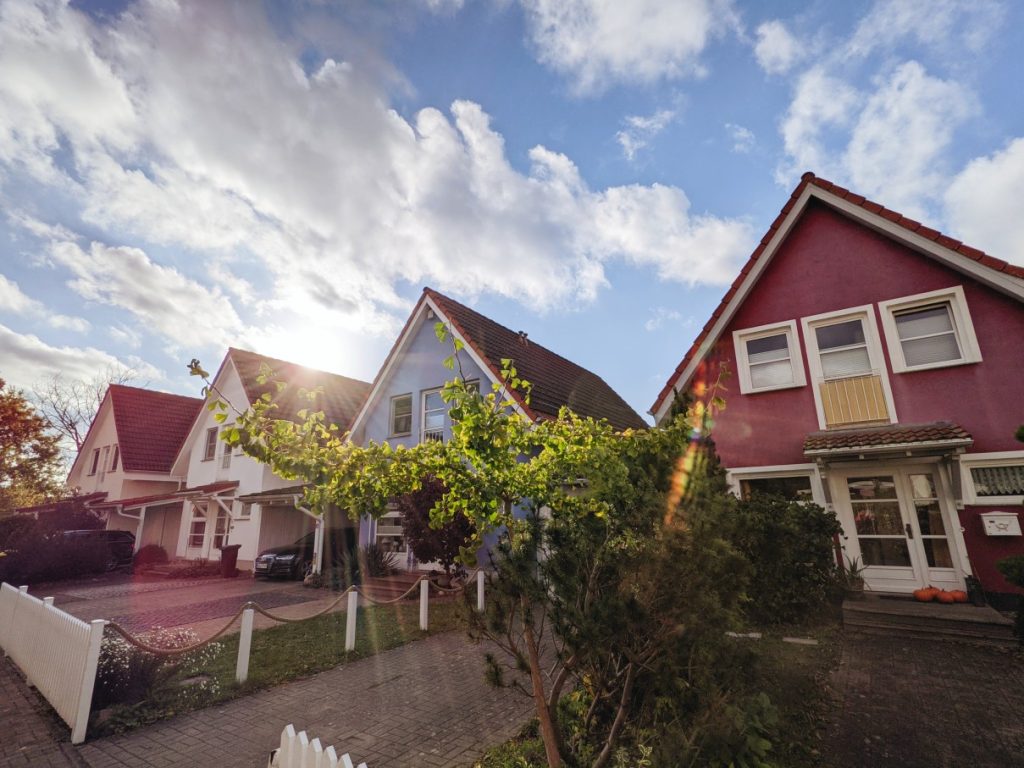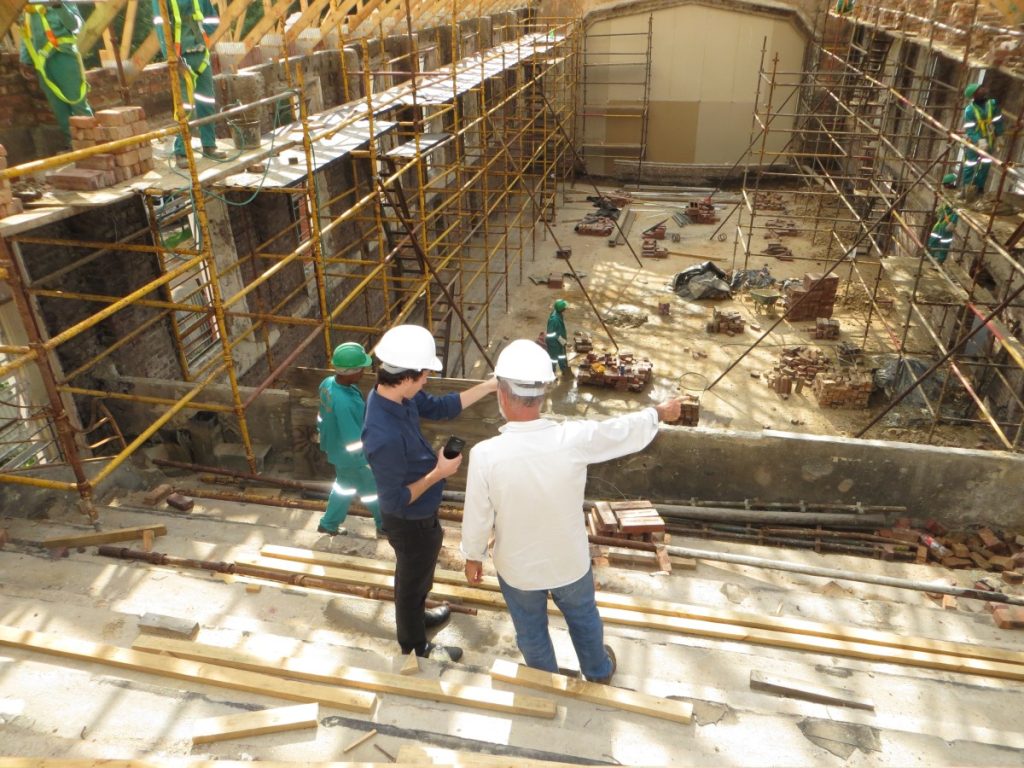Ever wondered why some countries have sky-high homeownership while others are packed with renters?
It’s not just a curiosity — these stats tell a deeper story. One about culture. Policy. Economics.
In this guide, we’re diving deep into the world’s highest and lowest homeownership rates. But we won’t stop there — we’ll break down the key drivers, share real-world case studies (think Romania, Singapore, USA vs Germany), and spell out what it all means for homeowners like you.
Let’s get stuck in.
How Is Homeownership Rate Measured?
Quick one — before we dive into the rankings, here’s how homeownership is actually calculated.
Homeownership rate = the share of occupied households where at least one person owns the home. Doesn’t matter if it’s owned outright or mortgaged — if they’ve got ownership, it counts.
But here’s the thing: definitions vary a bit country by country.
Some countries count homes on family land. Others don’t. Some include informal homes. Others ignore them. And not every country updates the data every year — some rely on once-a-decade censuses.
So while we’ve got a solid global picture, it’s not pixel-perfect.
Main data sources include:
- Eurostat – Europe’s go-to for consistent definitions across the EU.
- Trading Economics – Good for official stats from national agencies.
- World Population Review – Gathers and ranks global data.
- United Nations & World Bank – Offers broader housing indicators.
- National Surveys – Think ONS (UK), U.S. Census Bureau, etc.
Heads up: vacant homes aren’t factored in. So a country with a lot of empty flats (like China) might look like it has a sky-high ownership rate — but in practice, it’s a bit fuzzier.
Global Leaderboard: Highest and Lowest Homeownership Rates in 2025
You’re probably wondering — which countries top the charts when it comes to owning your own place?
Well, here’s the global leaderboard based on the most recent data (2021–2024). We’re talking the top 10 and bottom 10 countries for homeownership — and some of the rankings might just surprise you.
Ranked by highest homeownership:
| Rank | Top 10 Countries (Highest) | Rate | Year |
| 1️⃣ | Kazakhstan | ~98% | 2024 |
| 2️⃣ | China | ~96% | 2022 |
| 3️⃣ | Laos | 95.90% | 2015 |
| 4️⃣ | Romania | 95.60% | 2023 |
| 5️⃣ | Albania | 95.30% | 2023 |
| 6️⃣ | Slovakia | 93.60% | 2023 |
| 7️⃣ | Serbia | 91.60% | 2023 |
| 8️⃣ | Croatia | 91.20% | 2023 |
| 9️⃣ | Montenegro | 91.00% | 2023 |
| 🔟 | Hungary | 90.50% | 2023 |
Ranked by lowest homeownership:
| Rank | Bottom 10 Countries (Lowest) | Rate | Year |
| 1️⃣ | Hong Kong | ~22% | 2021 |
| 2️⃣ | Nigeria | ~25% | 2019 |
| 3️⃣ | UAE | 28% | 2017 |
| 4️⃣ | Switzerland | 42.30% | 2023 |
| 5️⃣ | Germany | 47.60% | 2023 |
| 6️⃣ | Austria | 54.30% | 2023 |
| 7️⃣ | Japan | 55.00% | 2021 |
| 8️⃣ | Turkey | 56.70% | 2023 |
| 9️⃣ | South Korea | 57.30% | 2021 |
| 🔟 | Denmark | 59.20% | 2021 |
What stands out?
- The highest rates are dominated by Eastern European and Central Asian nations. Many of these saw mass housing privatisation after communism fell — more on that in a bit.
- At the lowest end, you’ve got places with super expensive housing (Hong Kong), large expat populations (UAE), or strong renting cultures (Germany, Switzerland).
Also worth noting: high ownership doesn’t always mean great housing quality. In some countries, ownership might include inherited or self-built homes, many of which are basic or informal.
Pro tip for UK investors: High-ownership countries often have lower housing turnover — fewer people are looking to buy or sell. That’s good to know if you’re thinking of investing in one of these markets, as it might mean it’s difficult to find a buyer if you decide to sell later down the line.
Regional Homeownership Patterns: Who Owns Where?
While individual countries vary, the bigger picture tells us loads about how policy, culture, and history shape housing markets.
Here’s the regional breakdown:
Eastern Europe: Homeownership Powerhouse
Ownership rates here are off the charts. Think 80–95%+ in most countries.
Why?
- After the fall of communism in the ’90s, governments sold off public housing — often for peanuts — to tenants.
- This mass privatisation turned millions into homeowners almost overnight.
- Add to that a strong cultural preference to “own not rent”, and you’ve got a region full of homeowners.
Examples:
- Romania – ~95.6%
- Slovakia – ~93.6%
- Hungary, Croatia, Albania – all above 90%
Western & Northern Europe: Balanced but Varied
Here it’s a mixed bag.
- The UK hovers around 65% (more on this in a bit).
- Countries like France, Sweden, and Netherlands are in the 63–70% range.
- But then there’s Germany (~47%) and Switzerland (~42%) — with a totally different approach.
What makes the difference?
- In Germany and Switzerland, renting is the norm — culturally accepted, even for middle-class families.
- Tenant protections are strong, mortgage incentives weaker.
- In the UK, ownership is still a big life goal, but affordability is a growing barrier.
Asia-Pacific: Two Worlds in One
Some Asian countries boast very high ownership — others, not so much.
High:
- China – ~96%
- Vietnam – ~90%
- Singapore – ~88–91% (more on that in a case study)
Low:
- Japan – ~55%
- South Korea – ~57%
- Hong Kong – ~22%
Why the gap?
- In places like China and Vietnam, many homes are self-built or bought cheaply after privatisation. China and Vietnam are communist countries, but have allowed in more free-market elements over the years.
- Singapore made homeownership policy central to nation-building.
- Meanwhile, Japan and Korea have tight urban spaces, younger renters, and lower cultural pressure to buy.
North America: Middle of the Road
Both the US and Canada sit at ~65–66%.
- In the US, homeownership rose sharply post-WWII with 30-year fixed mortgages, government-backed loans, and the whole “American Dream” ethos.
- Canada followed a similar path, with a slightly stronger rental culture in some provinces.
Interesting twist: Mexico’s homeownership rate is ~80% — thanks in part to informal housing (we’ll discuss this in detail in a moment).
Latin America: High Ownership, Often Informal
Across the board, ownership rates are high — typically 70–80%.
Why?
- Cultural norms favour owning (even if you have to build it yourself).
- Mortgage markets are underdeveloped, but that doesn’t stop people. Often locals in these areas agree seller financed deals to facilitate sales.
- Many homes are built gradually, often without formal finance or strict adherence to building regs.
Middle East: Expat-Heavy = Low Ownership
Places like the UAE have low overall homeownership (UAE ~28%), but that’s because much of the population are expats who rent.
Among citizens, ownership is much higher — thanks to subsidies and land grants.
Other figures:
- Saudi Arabia – ~62%
- Iran – ~60%
- Israel – ~65%
Africa: Sparse Data, Stark Contrasts
In many rural parts of Africa, families own their homes — often self-built.
But in cities, ownership can be far lower due to affordability and housing shortages.
- Kenya – ~75%
- South Africa – ~56%
- Nigeria – ~25% (one of the world’s lowest, with a huge housing gap)
Bottom line: Wealth doesn’t always equal ownership. Germany is rich but low on ownership. Mexico isn’t wealthy, yet most own their homes.
It all comes down to history, policy, culture, and a bit of luck.
Because it’s not just “rich vs poor” or “East vs West”. The truth is more layered — and a lot more useful if you’re investing or thinking about your own housing journey.
What Drives High (or Low) Homeownership Rates?
There’s no single reason why one country has loads of homeowners and another barely any. But when you break it down, five key factors consistently crop up.
Let’s take a closer look.
1. Affordability & Access to Finance
This one’s obvious — but also complicated.
- In cheap housing markets, or where families can self-build, ownership’s more accessible. Think Eastern Europe, Mexico, or parts of Asia and Africa.
- In expensive markets, like Hong Kong or London, ownership feels out of reach for many.
And mortgage availability plays a big role too:
- In the UK and US, 20–30 year mortgages made ownership viable for millions.
- In developing countries, formal loans are rare — but many still own homes thanks to informal building and seller finance deals i.e. when buyer pays the seller gradually over a few years.
Takeaway: you don’t need a mortgage market to have high ownership — but you do need some way for people to get on the ladder.
2. Government Policy
Policy can make or break ownership rates.
Examples that worked:
- Singapore’s HDB scheme — sold subsidised flats to citizens, creating a nation of homeowners.
- UK’s Right to Buy — let millions of council tenants buy their homes in the ’80s, boosting ownership by 10%+.
- Eastern Europe’s privatisation — handed over state-owned flats to occupants in the 1990s.
Examples that held it back:
- Germany — strong tenant rights, no mortgage tax deductions, and less pro-buying culture.
- Hong Kong — vast public rental sector, sky-high prices, and limited ownership incentives.
Bottom line: Policy matters — a lot. Especially when you combine it with cultural expectations.
3. Culture and Social Norms
Sometimes, people buy because it’s just “what you do”.
- In Romania and China, owning a home is a rite of passage — in China, it’s often a requirement to get married.
- In Germany and Switzerland, renting is normal. There’s no shame in it — even for affluent families.
The UK sits somewhere in the middle. Owning is aspirational, but we’ve also seen younger generations rent longer due to cost pressures.
4. Demographics
Age structure matters.
- Younger populations (like Nigeria) might have lower ownership today — but high future potential.
- Ageing societies (like Japan or Italy) often have high ownership thanks to previous generations, but risk long-term declines if younger buyers can’t afford to replace them.
5. Legal and Structural Factors
Things like:
- Secure property rights
- Ease of land registration
- Inheritance norms
- Urban vs rural housing types
…all play a part.
In places with murky land laws (some parts of Africa, South Asia, or Latin America), you might own a home in practice but not legally. That can boost or distort ownership stats, depending on how the data’s collected. For example, in Panama, a large percentage of occupied homes have no deed as they were built illegally. But the government turns a blind eye so as to avoid a housing crisis.
These drivers interact.
You might have cheap land — but no mortgages. Or good mortgage access — but crazy house prices. Or great policy — but a culture that prefers flexibility over ownership.
If you’re a property investor, understanding these dynamics helps you pick the right markets. If you’re a homeowner, it gives you context about where your country sits — and why.
Case Studies: Inside the World’s Homeownership Extremes
Let’s explore five countries that show how different paths, policies, and cultures lead to wildly different ownership rates.
Romania: From Communism to 95% Homeownership
Romania is a textbook example of how policy and history can rewrite a nation’s housing story.
What happened?
- Under communism, most people lived in state-owned flats.
- After 1989, the Romanian government began selling those flats to tenants — often for a symbolic price.
- By the late 1990s, 95% of former public housing was privately owned.
That single policy shift transformed Romania into one of the highest-ownership countries in the world.
Add to that:
- A culture where “renting is money down the drain”
- Lots of inherited or self-built rural housing
- A weak mortgage market (people just found ways to buy)
The result? Even lower-income Romanians often own — but not without downsides. Many of the homes are ageing, poorly maintained, or lack liquidity. Once you’re in, you tend to stay put.
Singapore: Engineered Ownership at Scale
Singapore didn’t stumble into high ownership. It built it — literally.
How?
- The Housing & Development Board (HDB) was created to house the population affordably.
- But instead of renting those flats, the government sold them (on 99-year leases).
- Most Singaporeans used their mandatory CPF savings to buy in.
Today, over 90% of Singaporean households own their homes. Around 77% live in HDB flats — and these aren’t basic rentals, they’re well-built, often upgraded, and part of the country’s social fabric.
The twist?
- Most of this ownership is in high-rise buildings. So Singapore proves you can build a homeowning society in a dense city — if the government policy is right.
USA vs Germany: Same Wealth, Different Worlds
Two rich countries. Two opposite outcomes.
USA (~65%)
- The “American Dream” has always included owning a home.
- 30-year fixed-rate mortgages, tax breaks, and suburban development fuelled massive ownership gains post-WWII.
- At its peak in 2004, homeownership hit nearly 70%.
Germany (~47%)
- After WWII, rebuilding focused on rental housing.
- Strong tenant protections and a stable rental culture made long-term renting normal — even desirable.
- Mortgage terms were shorter, deposits higher, and there were fewer tax perks for buyers.
What it shows: policy and culture go hand in hand. In Germany, renting is not a “second best” — it’s often preferred. In the US, owning is the goal — even if it means stretching financially.
Mexico: High Ownership, But Informal
Mexico clocks in at ~80% ownership, which sounds amazing on paper — until you look under the bonnet.
What’s happening?
- Most homes are self-built or inherited, not bought with a mortgage.
- Informal housing is widespread — meaning lots of homeowners don’t actually have a title deed.
- Mortgages exist, but only a minority use them.
So yes, ownership is high — but it’s often outside the formal housing market. Homes may be simple, lack utilities, or be built over many years.
Key takeaway: a high ownership rate doesn’t guarantee housing quality or legal security.
Nigeria: A Lesson in Housing Deficit
At the other end of the spectrum, Nigeria has one of the lowest homeownership rates in the world — around 25%.
Why so low?
- Rapid population growth, especially in cities.
- Formal housing is unaffordable for most.
- The mortgage market is almost non-existent (interest rates ~20%+).
Even informal self-building struggles to keep pace with demand. As a result, millions live in shared accommodation or rent in overcrowded conditions.
Nigeria’s example shows: when housing supply and finance collapse, even informal ownership can’t fill the gap.
Real-world proof: the same housing goal (ownership) can be achieved — or blocked — in wildly different ways depending on policy, history and culture.
Homeownership Trends Over Time — And What’s Coming Next
Ever looked at a homeownership chart and thought, “Why did things peak there… and drop here?”
You’re not alone.
Here’s how ownership rates have changed over the past few decades — and what could be around the corner.
Post-War Boom: Ownership Surged Across the West
After WWII, many countries saw huge spikes in homeownership:
- USA: From ~44% (1940) to 62% (1960), driven by suburban expansion, GI loans, and 30-year mortgages.
- UK: From ~50% (1970s) to 69–70% by early 2000s, thanks to Right to Buy and mortgage availability.
- Spain, Ireland, Australia: All jumped during the ’90s–2000s housing boom.
It was a golden age of ownership — fuelled by cheap credit, government support, and mass construction, and era which collapsed in the 2008 Financial Crisis.
Post-Communist Flip: Eastern Europe’s One-Time Leap
The 1990s were a game-changer in Eastern Europe.
When communism collapsed, governments across the region sold off state housing to tenants — often for symbolic sums.
Result? Overnight homeowner societies.
- Romania, Hungary, Slovakia, Poland — all surged past 80–90% ownership.
- It was a one-off event that totally reshaped their housing systems.
2008 Crash: A Global Reality Check
The financial crisis hit hard — especially in countries with housing bubbles.
- USA: Ownership fell from 69% (2004) to ~63% (2016).
- UK: Slid from ~70% to ~65%.
- Spain and Ireland: Saw sharp declines after years of speculative buying.
Tighter lending, job losses, and changing attitudes caused a long, slow reset.
Generational Divide: Young People Delaying or Ditching Buying
Millennials and Gen Z are less likely to own than previous generations at the same age. Why?
- House prices outpaced wages
- Student debt ballooned
- Urban rents soaked up savings
- Marriage and family delayed
In the UK, ownership among 25–34 year olds dropped massively between the early 1990s and late 2010s — and it’s only just beginning to recover (slightly).
COVID Bump… Then Crunch
During the pandemic:
- Ultra-low interest rates helped some first-time buyers get in
- Others were priced out as home values surged
- In the US, ownership ticked up to ~65.5% in 2020–2022
- In the UK, rising prices and low supply kept ownership stable, but stagnant
Fast forward to 2025: inflation, high interest rates, and sluggish wage growth are putting pressure on buyers again.
What’s Next?
Here’s what we’re watching:
In the West:
- Ownership may stagnate unless affordability improves
- Policy shifts (like Help to Buy) could help — but might not be enough
- Expect more long-term renting unless something gives
In emerging markets:
- Countries like India, Indonesia, and Brazil could go either way
- Will they formalise ownership through better finance?
- Or will urbanisation outpace housing?
- Will they formalise ownership through better finance?
Ageing populations:
- Could mean more inheritance-driven ownership (older homeowners passing properties to heirs)
- Or more empty homes (especially in Japan and parts of rural China)
Rental resurgence:
- As younger people delay buying, rental demand will remain strong
- Smart investors are already shifting towards build-to-rent, co-living, and flexible housing models
Takeaway for UK readers: unless we see major policy changes or house prices level off, ownership is likely to stay flat or fall slightly — especially among younger buyers.
The Pitfalls of Homeownership Stats: What the Numbers Don’t Tell You
It’s easy to look at a country’s ownership rate and think, “Higher must be better.” But it’s not always that simple.
Here’s what you really need to keep in mind when comparing ownership rates globally.
1. Vacant Homes Skew the Picture
Most stats only count occupied homes.
So, if a country has millions of empty homes (like China — with ~20% of urban housing reportedly vacant), those don’t show up in the ownership rate.
You could have a 90% homeownership rate — and still a serious housing crisis if those homes are sitting empty.
Investor takeaway: High ownership + high vacancy = inefficient market. Proceed with caution.
2. Informal Housing Blurs the Lines
In many countries, families live in homes they built themselves or inherited from someone who built it illegally — often built on what’s technically public land, without any formal paperwork.
They consider themselves owners. And surveys may or may not count them that way.
3. Quality of Housing Isn’t Measured
A 95% ownership rate sounds great — until you realise many of those homes are:
- Overcrowded
- Lacking sanitation
- Structurally poor
4. Household-Based Metrics Can Mislead
Ownership rates are calculated by households, not individuals.
So:
- If 4 people live in one owned home, that’s 1 owner household.
- If 4 people rent separate flats, that’s 4 renter households.
This can skew comparisons — especially in places where multi-generational living is common (e.g. Italy, India).
5. Definitions of “Home” Vary
Some stats lump in detached homes, flats, rural shacks — everything. Others separate them.
Also, if someone owns a home but rents it out, they’re not counted as an owner in homeownership stats — it’s the occupant that counts as a renter.
That means a country can have lots of landlords, but still show low ownership if tenants outnumber owner-occupiers.
6. Year-to-Year Data Isn’t Always Fresh
Many countries update their housing data once every 5 or 10 years.
So when you see rankings, remember:
- Laos’ 95.9% stat is from 2015
- UAE’s 28% is from 2017
These could’ve changed — and probably have.
Treat these rankings as useful snapshots, not precise real-time scores.
7. National Averages Mask Local Realities
The UK’s homeownership is ~65% — but that hides massive regional variation.
- London: under 50%
- South East: over 67%
- Scotland and Wales: somewhere in between
Same goes for the US, China, Brazil, India — massive regional differences hidden behind the national average.
Moral of the story? Always read between the lines. Ownership rate is a helpful high level benchmark — but not a full diagnosis of a country’s housing health.
What Homeownership Rates Really Mean for You (And Your Property Strategy)
You’ve seen the numbers. You’ve read the stories. Now let’s translate it into real-world takeaways.
Because understanding global homeownership isn’t just a geography lesson — it can actually give you an edge in the UK market.
Here’s how.
1. High Homeownership = Low Liquidity
In countries where 90%+ of people own homes, there’s one big issue:
Not much movement.
There’s less buying and selling. Fewer rentals. And less churn.
That means if you’re trying to sell your home — especially in a high-ownership region — it might take longer to find a buyer.
Investor tip: A “nation of owners” often equals a slow market. Good for stability. Bad for flipping.
2. Low Ownership = Bigger Rental Market
In countries like Germany or Switzerland, where homeownership is below 50%, the rental market is massive.
For landlords, that’s good news:
- High demand
- Long-term tenants
- Often more professional standards (which means better returns)
In the UK: Renting is growing fast, especially among young adults in cities. If that trend continues, rental yields in key urban areas could outperform national averages.
3. Ownership Affects Labour Mobility
Owning ties people down.
Renting gives people flexibility to move for jobs, family, or education.
Countries with ultra-high homeownership may struggle with:
- Regional unemployment (people can’t move easily)
- Misallocated housing (e.g. older couples in big homes, young families crammed into flats)
For policymakers: It’s a balancing act. Push ownership too hard and you lose agility in the workforce.
4. Homeownership Fuels (or Inflates) Wealth
In ownership-focused countries, your home is your pension.
That can drive:
- Asset accumulation
- Intergenerational wealth transfer
- Or bubbles and crashes if lending goes wild (like the 2008 crisis)
For homeowners: You’ve got a valuable asset — but it’s not immune to risk. If prices stagnate or fall, equity can evaporate fast.
5. Low Ownership = Political Pressure to Build
When homeownership drops, governments usually scramble to respond.
We’re seeing it now in the UK:
- Help to Buy
- Shared Ownership schemes
- First-time buyer ISAs
But if prices keep rising and ownership continues to fall, expect:
- More build-to-rent developments
- Longer-term tenancy models
- New taxes or subsidies to nudge behaviour
If you’re investing: watch for policy tailwinds — the right incentives can reshape a market.
6. Understanding Market Structure Helps You Pick Your Strategy
If you’re a landlord, you want strong tenant demand and manageable regulation.
If you’re flipping or selling, you want fast-moving markets and lots of buyers.
By knowing where a country or city sits on the homeownership spectrum, you can spot:
- Undervalued rental opportunities
- Ageing owner-heavy areas ripe for redevelopment
- Or risky markets where ownership is high but liquidity is low
Bottom line: Homeownership rates affect everything — from pricing and policy, to strategy and timing.
If you’re a homeowner, they shape how easy it is to sell or borrow. If you’re an investor, they guide where and what you buy next.
Looking to Sell Quickly in the UK?
Whether you live in a homeowner-heavy suburb or a rent-saturated city, one truth remains:
Selling your home isn’t always easy.
And that’s where we come in.
Property Rescue makes the home-selling process fast, stress-free, and reliable — no matter what’s happening in your local market.
Here’s how.
- Buy your home directly, in cash
- No estate agents, no listings, no waiting
- Completion in days or weeks, not months
Perfect if you need to move fast or want certainty in uncertain times.
Solutions for Complex Situations
High ownership sometimes means people are asset-rich but cash-poor. Need to unlock equity quickly due to:
- Divorce?
- Job loss?
- Debt?
- Relocation?
We can help. From sell-and-rent-back solutions to immediate cash purchases, we’re here to give you flexibility and breathing room.
Free Valuation + Expert Advice
Not sure where you stand? No problem.
We offer free, no-obligation valuations and walk you through your options. Even if you don’t sell with us, you’ll leave better informed — and that’s always a win.









